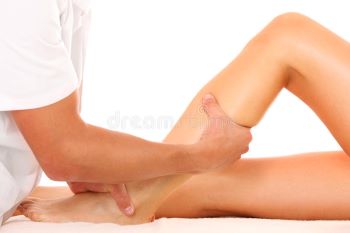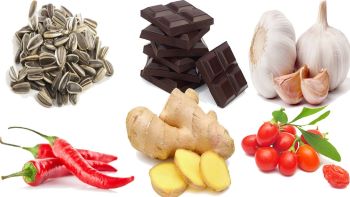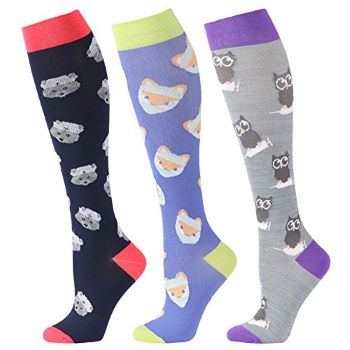What does poor circulation mean?
Poor circulation is when the blood flow to particular parts of your body is flowing inefficiently and it is unable to feed your body the required oxygen and nutrients this is commonly known as Hypoxia. Poor circulation is caused by other health issues, so it is important to treat the underlying ailments to combat this problem.
There are various symptoms e.g. tingling sensation of your extremities, discoloration of your skin, swelling of the feet, legs, and ankles, cold hands and feet. You may feel tired all the time and unable to concentrate. It can also lead to brain damage, and headaches and dizziness make occur. Poor circulation may also lead to the development of ulcers, varicose and spider veins. These are just a few of the troubling symptoms that can be experienced.
So what can you do about poor circulation?
There are many ways to help improve your poor circulation, here are a few ideas that may help?
Massage
You can enjoy a massage from a trained therapist, they can help stimulate blood flow by using manipulation and pressure techniques to release the congestion and muscle tension. This allows the new blood to flow more efficiently to the area, providing the nutrients and oxygen required.

Quit Smoking
If you are a smoker, then quitting is a great option, for all aspects of your health, decrease the risk of a stroke, heart attack and cardiovascular disease, more importantly quitting will help improve your circulation.
Fact: More people die from circulatory diseases associated with smoking than they do from lung cancer.

Yoga
Try Yoga, this can help you to reduce stress and anxiety at the same time allowing you to increase blood flow. Yoga can be practiced at classes, home or even in the outdoors, and you can find plenty of information different techniques on the big wide web.

Diet
Changing your diet and adding foods that are said to improve blood circulation. Oranges, dark chocolate, cayenne pepper, sunflower seeds, these are all well worth researching on all the benefits that they have to offer.

Omega 3
Omega 3 is a great way to improve your blood circulation and is especially helpful by increasing blood flow to your muscles during exercise. It helps promote the release of nitric oxide which dilates your blood vessels and it also helps to prevent platelets clinging together which could become a blood clot formation.

Regular exercise
You could join a gym and make some new friends, even hire a personal trainer. Or you could start your own regime at home, even going for a brisk 30-minute walk or a bike ride will help get that blood pumping through your body.

Compression gear
This is a great way to improve the blood circulation in your legs especially. Compression socks and sleeves also help reduce swelling and help prevent blood clots developing. These clots could become DVT – deep vein thrombosis, these are clots that form in the deep veins of your legs, this happens to a lot of people who have traveled long distances, especially in a plane, where your space is limited and not much opportunity to move about freely.
Let’s talk compression socks and how do they work?
Because of gravity, sometimes it is harder to pump the blood back up to your heart efficiently, compression socks work by applying graduated pressure to the ankles and legs, by doing this it supports the muscles and blood vessels which help reduce the diameter of the blood vessels, this, in turn, increases the strength of the blood flow throughout your legs.
Because the circulation has increased in pressure, it then can be pumped back up to the heart easier, allowing the blood to become replenished with nutrients and oxygen that is needed for healthy blood for your muscles and legs. If you have poor circulation you may have to wear compression socks for several years or even for the rest of your life.
There are generally three types of compression garments: Graduated compression stockings, anti-embolism stockings, and non-medical support hosiery.
Popular Articles on ComproGear
How Long To Wear Compression Socks for Edema Compression Socks for Fluid Build Up
The benefits of compression wear
The compression socks help poor circulation and also prevent the pooling of blood in your lower extremities which can cause blood clots to form and also helps to reduce any swelling in your ankles , feet or hands. Some say it helps from being dizzy and light headed when you stand up.
The support of the compression socks can also ease the pain of varicose veins, improve lymphatic drainage and reverse venous hypertension, reducing the likelihood of ulcers forming. Compression socks help enormously with the treatment of poor circulation.
A lot of athletes are now wearing compression garments, it helps keep the blood flowing steadily replenishing the body with oxygen and nutrients. By keeping the blood flowing and feeding your muscles it helps to reduce the soreness you may experience after working out, therefore helping the body to recover quicker.
Side effects of compression wear.
You do have to be aware of certain side effects that can occur if not careful. Always check for any irritation of the skin, this could be an indicator that the stockings or socks are not fitted properly, or it could be that you are allergic to the material used in the socks.
You can develop corns and callouses, this happens when there is pressure and friction and the skin tries to safeguard itself. The pins and needle sensation may become worse, this is a sign that the socks/stockings are too tight for your legs the compression rating may be wrong for you. If you are wearing the wrong size you can also experience joint pain in the knees or loss of circulation.
So as you can see it very important to make sure you are wearing the right size and compression for your personal needs.
Style, fun and be healthy at the same time.
When you first think of compression socks you think of ugly black thick socks or stockings, that nobody would want to be seen walking around in. But have no fear, now you can wear your compression gear and enjoy the different styles and colors. There are so many styles on the market now it is incredible and some can be quite fun to wear.
There are people in the workforce that wear compression socks every day, as they are constantly on their feet at work take, Nurses, police officers, flight attendants and cashiers for example. Then on the other end of the scale there are people that are sitting for most of the day like cashiers, clerks, truck drivers and office workers.
If you have poor circulation and have to wear compression garments, have no fear there are plenty of fashionable and colorful options to choose from these days. A lot of nurses like to wear funky socks just cheer up their patients, especially nurse that work with children.

What material is used for compression wear?
The materials that are used to make compression wear can be either Lycra, Nylon, Natural fiber, spandex, microfiber and silk. ComproGear compression socks are made from 65% nylon and 35% elastane (spandex)which are a grade of 20 – 30mmHG.
There are different grades of compression that are used, the following is a brief explanation of the levels of compression.
Note: mmHG is the abbreviation of millimeters of mercury. This is used for the measurement of pressure, used in also taking blood pressure.
15 – 20mmHG
These can be bought over the counter and are used mainly for travel, hiking or to help reduce mild swelling.
20 – 30mmHG (Class I – medical grade)
This compression is great for managing spider veins, varicose veins, travel, sports and after certain surgeries, also helping to reduce swelling and aid poor circulation. This level is also great for pregnant women to help with edema and leg tiredness.
30 – 40mmHG (Class II – medical grade)
This compression is used for health symptoms that are moderate to severe. They help treat lymphedema or DVT – deep vein thrombosis and poor circulation.
40 – 50mmHG (Class III – medical grade)
This is a very high grade of compression and is generally used for wound management, severe venous stasis, venous ulcers and lymphedema. With this level of compression, it must be used only under medical supervision.
Note: It is best to replace your compression garments after about 6 months, this is because they may get stretched or damaged after being washed too many times, therefore the compression grade may not be the same level as it was.
Tips on compression garments
- Wash your compression garment before wearing, it makes them easier to put on.
- Put them on in the morning after resting, when your limbs are the least swollen.
- Put your compression socks on whilst sitting on a firm chair rather than a bed.
- If you are wearing a high grade of compression sock, it may be easier to get them on if you put talc on your legs or wear silk stockings underneath.
- You should hand wash your compression garment daily, especially if you have a wound or ulcer.
- Remove rings or items that may catch your stockings or socks.
- Make sure there are no wrinkles once the garments are on as this can cause irritation.
- Do not wear one pair over the other to increase compression, this could cut off your circulation.
- To put them on you can turn them inside out, almost all the way, then place your toe at the small pocket and slowly pull them over the foot and up the leg. (There are some devices you can use to help get on the socks.)
Where can you get your compression wear?
Once you know the compression level required, you can get your compression socks from your local pharmacy, there are many websites on the internet that you can order e.g. ComproGear, and specialized retail outlets. There is a multitude of different styles and fun designs to choose from. Giving the relief and comfort that you require.
If you are suffering with poor circulation, then take a visit to your local doctor to find out what is causing this problem. They will be able to advise you on the level of compression you will need for your garment, how and when to wear it. so get on your compression socks and get your blood pumping the way it should be.
This page last updated December 15, 2022
